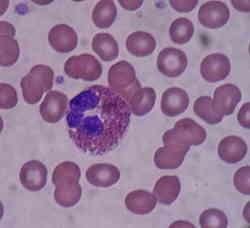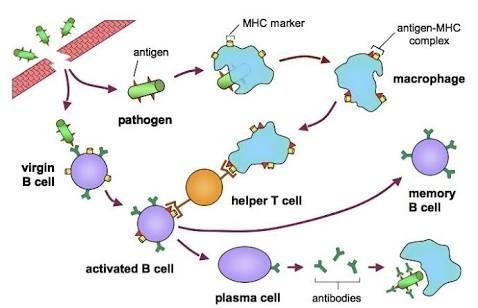Let's Learn About Mechanism of the Body Defense System
The following will explain the mechanism of the body's defense system when our bodies are wounded. Basically in the body's defense system there are several stages: first line body defense system, second line body defense system, and third line body defense system. The first and second line body defense systems are nonspecific nonspecific body defenses and the third line body's defense system is a specific reproductive system.
The first line body defense system that plays a role is the skin, mucous membranes, secretions of skin and mucous membranes. The second line body defense system includes phagocytic white blood cells, antimicrobial proteins, inflammatory responses. While the third line body defense system that plays a role is Lymphocytes and Antibodies.
When our bodies get injured, then in addition to the blood clotting reaction, the body also quickly protects the openings in wounds from bacterial infections and other microorganisms. The direct injury has damaged the nonspecific body's defense system.
When injuries occur, histamine is released by mast cells (mastocytes), and basophilic cells are scattered throughout the tissues. Histamine received receptors in smooth muscle and endothelium in blood capillary walls causes blood capillaries to undergo vasodilation (increase in diameter), while the veins narrow. This causes the blood capillaries to become more permeable. The area will look red and swollen.
In addition to secreting histamine, mastocytes also produce chemotactic factors to 'attract' and activate eosinophils, neutrophils, and monocytes (phagocyte cells), as well as a blood chip activation factor that will be involved in blood clotting processes. Phagocyte cells, will be visible around the wound area after about 30 to 90 minutes later.
Eosinophils

Eosinophils play a role in inhibiting and reducing the concentration of histamine secreted by mastocytes, in order to avoid excessive reactions. If an infection occurs by bacteria, the neutrophils will activate the lysosome. Lysosomes release lysozyme enzymes that will degrade bacteria and cells from damaged tissue around the wound.
Monocytes and Macrophages

Monocytes and macrophages also produce endogenous pyrogen. This substance gives signals to the temperature regulator in the hypothalamus, to raise the body temperature a few degrees. We call this situation a fever. This is especially true if the infection is severe enough. Rising body temperature is intended to inhibit the growth of bacteria or pathogenic organisms, to be more easily disabled. This body response can be said to be a nonspecific body defense response system and has not involved lymphocyte cells.
Macrophages, which account for only a few percent of the total leukocyte, play an important role. Macrophages have a MHC protein (macrophage's histocompatibility complex) which then binds to the antigen in microbes. The MHC-antigen complex is then migrated to the macrophage cell membrane.
Lymphocyte
Lymphocyte cells also participate in disabling microbes that enter the body, only with different mechanisms. Lymphocyte B cells with complement receptors bind to antigens from bacteria or pathogenic organisms. This is to recognize the antigen. B lymphocytes will divide and differentiate into memory cells and plasma cells. Plasma cells secrete antibodies that can disable the microbes that enter the body fluids (humor). The target of B lymphocyte surgery is bacteria, viruses outside the cells, fungi and protists. T lymphocytes form the cellular immune system. Cytotoxic cells will stick to cells already infected with viruses, cancer cells, or foreign cells that are transplanted into the body.
The receptor on helper T cells binds to the macrophage MHC-antigen complex. This bond causes helper T cells to produce interleukin hormones that induce helper T cells to divide and differentiate into memory cells. Rescue T cells can also bind to B lymphocytes and induce (with the help of interleukin hormone) B lymphocytes to divide and differentiate into memory cells and plasma cells. Plasma cells will secrete antibodies.
The secreted antibodies of plasma cells will bind to the microbial antigen, to then be recognized by macrophages and digested. This phenomenon is called opsonic adherence (Opsin is a term meaning "preparing to eat") or opsonization. This process is essentially a microbial cell marking mechanism for antigen paralysis with antibodies.
Cytotoxic T cells can also actively divide and differentiate with the help of interleukin hormones secreted from helper T cells. The cytotoxic cell recognizes foreign cells or virus-infected cells in the body, then breaks down its cell membrane with the protein it produces. This is very important, because antibodies can not attack pathogens that have infected body cells.
Sources :
The defense mechanisms of the adaptive immune system
What Is the Relationship between Lymphocytes and Antibodies?
Upvoted, Please Your Support with : Upvote and Resteem my blog : @redouanemez Thanks
Ok thanks